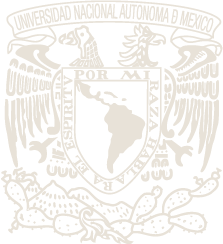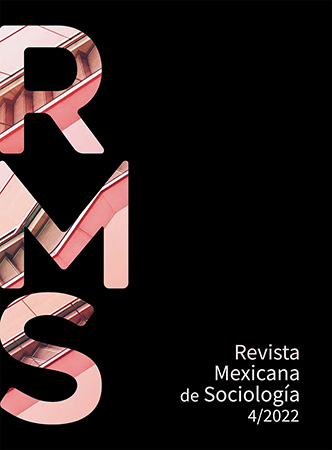Embryo donation and kinship: A Latin American approach
Main Article Content
Abstract
A cross-sectional, observational, and descriptive study was carried out, applying an ad hoc instrument on embryo donation. 702 Latin American individuals who underwent at least one assisted human reproduction technique participated. Several statistically significant associations were found. One of them revealed the relationship between the feeling of parenthood and the positive result of the pregnancy test (rather than abdominal growth or childbirth), an important finding giving the paucity of research on meanings, representations, or symbolization around pregnancy tests. Some other values and beliefs related to traditional conceptions are revealed, such as the relevance of consanguinity for kinship.
Downloads
Article Details

Revista Mexicana de Sociología por Universidad Nacional Autónoma de México se distribuye bajo una Licencia Creative Commons Atribución-NoComercial-SinDerivar 4.0 Internacional. Basada en una obra en http://revistamexicanadesociologia.unam.mx/index.php/rms/.
References
Álvarez-Díaz, Jorge Alberto (2009). “¿La maternidad de un padre o... la paternidad de una madre? Transexualidad, reproducción asistida y bioética”. Gaceta Médica de México 145 (2): 151-157.
Ansermet, François (2018). La fabricación de los hijos. Un vértigo tecnológico. Buenos Aires: Universidad Nacional de San Martín.
Arias y Alonso, Magdalena (2000). “ʽPater-materʼ y ʽgenitor-genitrixʼ en la diplomática medieval asturleonesa (775-1037)”. Analecta Malacitana 6. Disponible en http://www.anmal.uma.es/numero6/Arias.htm [consulta: 1 de agosto de 2021].
Bartlett, Linda A., Cynthia J. Berg, Holly B. Shulman, Suzanne B. Zane, Clarice A. Green, Sarah Whitehead y Hani K. Atrash (2004). “Risk factors for legal induced abortion-related mortality in the United States”. Obstetrics and Gynecology 103 (4): 729-737.
Bestard Camps, Joan (2004). Tras la biología, la moralidad del parentesco y las nuevas tecnologías de la reproducción. Barcelona: Publicacions i Edicions de la Universitat de Barcelona.
Canzi, Elena, Monica Accordini y Federica Facchin (2019). “ʽIs blood thicker than water? ʼ Donor conceived offspringʼs subjective experiences of the donor: A systematic narrative review”. Reproductive Biomedicine Online 38 (5): 797-807.
Christensen, Clayton M. (1997). The Innovatorʼs Dilemma: When New Technologies cause Great Firms to Fail. Boston: Harvard Business School Press.
Cohen, Jacques (2013). “From Pythagoras and Aristotle to Boveri and Edwards: A history of clinical embryology and therapeutic ivf”. En Textbook of Clinical Embryology, coordinado por Kevin Coward y Dagan Wells, 177-192. Cambridge: Cambridge University Press.
Davis-Floyd, Robbie E. (2003). Birth as an American Rite of Passage. Los Ángeles: University of California Press.
Eagleton, Terry (2000). The Idea of Culture. Malden: Blackwell Publishing. Eijk, Philip J. van der (coord.) (2005). Hippocrates in Context. Papers Read at the XIth International Hippocrates Colloquium (University of Newcastle upon Tyne, 27-31 August 2002). Leiden: Brill.
Elias, Sherman, y George J. Annas (1986). “Social policy considerations in noncoital reproduction”. Journal of the American Medical Association 255 (1): 62-68.
Filippini, Nadia (2021). Pregnancy, Delivery, Childbirth: A Gender and Cultural History from Antiquity to the Test Tube in Europe. Londres: Routledge.
Franklin, Sarah (2013). Biological Relatives: ivf, Stem Cells, and the Future of Kinship. Durham: Duke University Press Books.
Golombok, Susan (2015). Modern Families: Parents and Children in New Family Forms. Cambridge: Cambridge University Press.
Golombok, Susan (2020). We are Family: What Really Matters for Parents and Children. Londres: Scribe.
Gridelet, Virginie, Olivier Gaspard, Barbara Polese, Philippe Ruggeri, Stephanie Ravet,
Carine Munaut, Vincent Geenen, Jean-Michel Foidart, Nathalie Lédée y Sophie Perrier d’Hauterive (2012). “The actors of human implantation: Gametes, embryo, endometrium”. En Embryology: Updates and Highlights on Classic Topics, coordinado por Luís Antonio Violín Pereira, 85-126. Rijeka: InTech.
Grimes, David A. (2006). “Estimation of pregnancy-related mortality risk by pregnancyoutcome, United States, 1991 to 1999”. American Journal of Obstetrics and Gynecology 194 (1): 92-94.
Huele, E. H., Emy Kool, A. M. E. Bos, Bart J. M. Fauser y Annelien Bredenoord (2020). “The ethics of embryo donation: What are the moral similarities and differences of surplus embryo donation and double gamete donation?” Human Reproduction 35 (10): 2171-2178.
Johnson, Christopher H., Bernhard Jussen, David Warren Sabean y Simon Teuscher (coords.) (2013). Blood and Kinship: Matter for Metaphor from Ancient Rome to the Present. Nueva York: Berghahn Books.
Laín Entralgo, Pedro (1970). La medicina hipocrática. Madrid: Revista de Occidente. Layne, Linda L. (2009). “The home pregnancy test: A feminist technology?” Womenʼs Studies Quarterly 37 (1/2): 61-79.
Leavitt, Sarah (2006). “A private little revolution: The home pregnancy test in American culture”. Bulletin of the History of Medicine 80 (2): 317-345.
Meyer, Melissa L. (2005). Thicker than Water: The Origins of Blood as Ritual and Symbol. Nueva York: Routledge.
Preciado, Paul B. (2019). Un apartamento en Urano. Barcelona: Anagrama. Ramsey, Paul (1978). “Manufacturing our offspring: Weighing the risks”. Hastings Center Report 8 (5): 7-9.
Robinson, Joan H. (2020). “What the pregnancy test is testing”. The British Journal of Sociology 71 (3): 460-473.
Schneider, David M. (1984). A Critique of the Study of Kinship. Ann Arbor: The University of Michigan Press.
Steptoe, Patrick C., y Robert G. Edwards (1978). “Birth after the reimplantation of a human embryo”. Lancet 2 (8085): 366.
Strathern, Marilyn (1992). Reproducing the Future. Essays on Anthropology, Kinship and the New Reproductive Technologies. Manchester: Manchester University Press.
Tone, Andrea (2012). “Medicalizing reproduction: The pill and home pregnancy tests”. Journal of Sex Research 49 (4): 319-327.
Trounson, Alan, y Carl Wood (1981). “Extracorporeal fertilization and embryo transfer”. Clinics in Obstetrics and Gynaecology 8 (3): 681-713.
Williams, Raymond (2015). Keywords. A Vocabulary of Culture and Society. Oxford: Oxford University Press.
Zegers-Hochschild, Fernando, Javier A. Crosby, Carolina Musri, Maria do Carmo de Souza, A. Gustavo Martinez, Adelino Amaral Silva, José María Mojarra, Diego Masoli y Natalia Posada, on behalf of the Latin American Network of Assisted Reproduction (Redlara) (2020). “Assisted reproductive techniques in Latin America: The Latin American Registry, 2017”. JBRA Assisted Reproduction 24 (3): 362-378.


